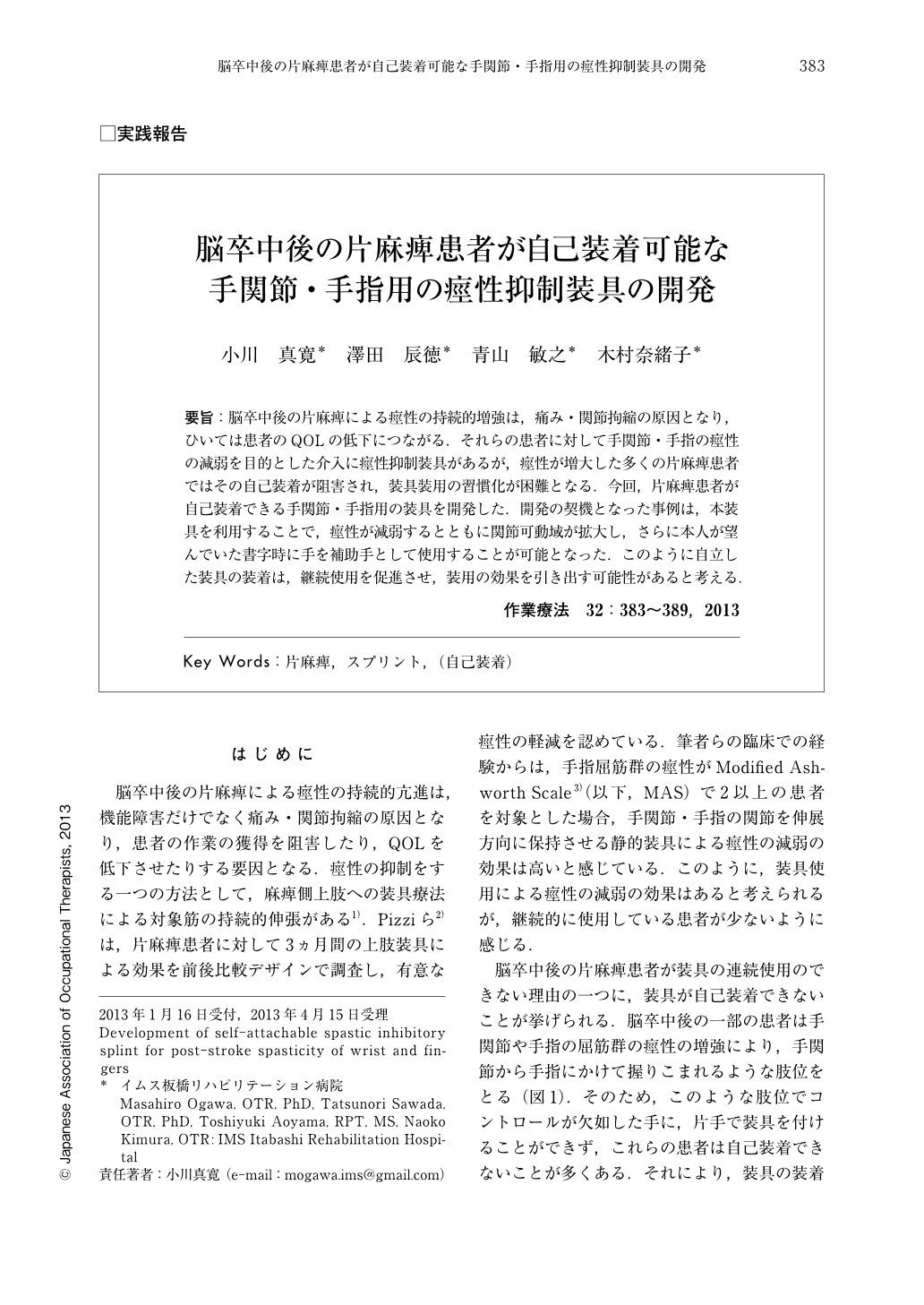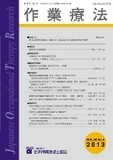Japanese
English
- 販売していません
- Abstract 文献概要
- 1ページ目 Look Inside
- 参考文献 Reference
要旨:脳卒中後の片麻痺による痙性の持続的増強は,痛み・関節拘縮の原因となり,ひいては患者のQOLの低下につながる.それらの患者に対して手関節・手指の痙性の減弱を目的とした介入に痙性抑制装具があるが,痙性が増大した多くの片麻痺患者ではその自己装着が阻害され,装具装用の習慣化が困難となる.今回,片麻痺患者が自己装着できる手関節・手指用の装具を開発した.開発の契機となった事例は,本装具を利用することで,痙性が減弱するとともに関節可動域が拡大し,さらに本人が望んでいた書字時に手を補助手として使用することが可能となった.このように自立した装具の装着は,継続使用を促進させ,装用の効果を引き出す可能性があると考える.
Chronic spasticity after stroke causes pain and contracture, which reduce quality of life. One of the interventions for reducing spasticity of wrist and fingers is the spastic inhibitory splint. However, most patients can't attach the splint by themselves which impedes their habitual use of the splint. We developed a self-attachable upper extremity splint for post-stroke patients. In one case, the subject's habitual use of the splint reduced spasticity and improved range of motion. Moreover, it enabled him to use his paralyzed hand to assist in writing. In this way, this self-attachable splint promotes habitual use, thus enhancing its overall effect.

Copyright © 2013, Japanese Association of Occupational Therapists. All rights reserved.


